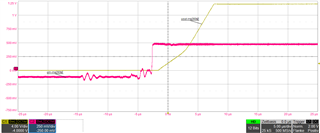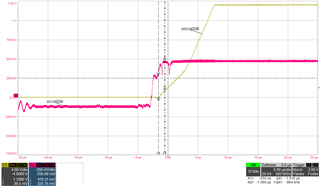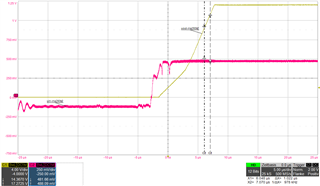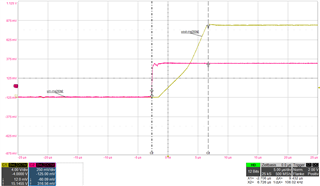Hallo together


 ,
,
we are planning a design with the INA293B1, where we want to measure a shunt current and want to detect a short-circuit current.
To detect the short-circuit current as fast as possible we need the full slew rate of the INA293 with 2,5V/µs as described in the datasheet.
In a first test (VCC=19V, CVCC=100nF, Ta=25°C, INA293B2, Output: Probe 10:1, 10pF) with an input ramp of 0,5 V to the plus-input when minus-input is connected to GND shows a delay of approx. 1,25µs until the
INA293 reacts concerning the input voltage. (You can see this behavior in the appendix „slew-rate-ina293.png“)
What we saw else is the varying slew rate starting from around 1,3V/µs (half of slew rate in datasheet and coming up to 3V/µs)
See „picture slew-rate-ina293--00001.png“ and „slew-rate-ina293--00005.png“
Concerning Table 7-2 Response time from the datasheet the response time at Vin= 0,3V in our case should be (0,3V*50V/V)/2,5V/µs=6µs.
In our case we have got 9µs. „slew-rate-ina293--00006.png“
Questions:
- What is the reason for the first delay?
- What is the reason for the two different slew rates?
- What are the reasons for the difference between measured response time and calculated response time/response time from datasheet?


